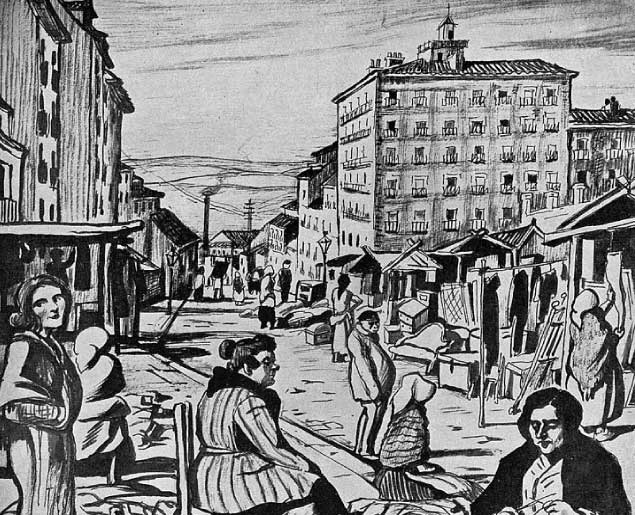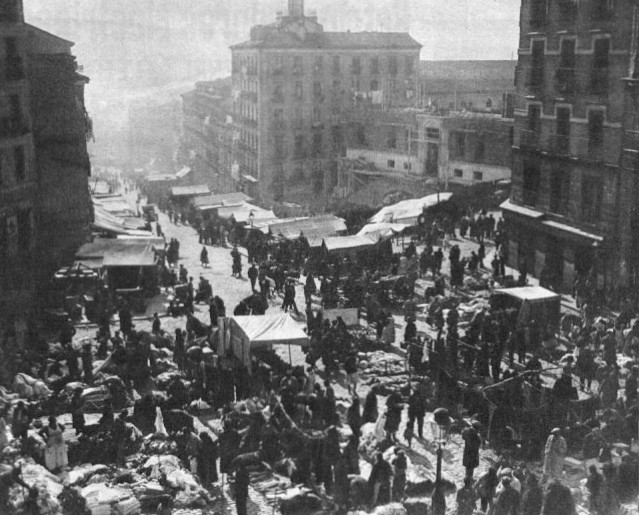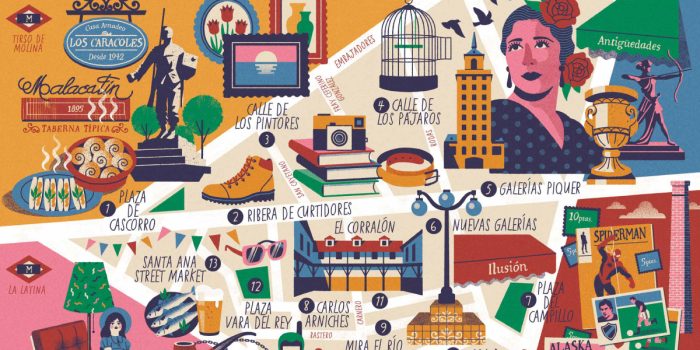Our History
In Madrid’s Rastro there have been merchants of all kinds since the Middle Ages.
The Rastro Madrileño dates with valid documentation from the year 1740 as a meeting place for the sale, exchange and barter of second-hand clothes, as an alternative to the peddling business. It was located in the vicinity of the old slaughterhouse and tasks related to the tanning of animal skins were carried out in the surrounding area. In fact, this is the origin of its name, since ‘rastro’ in the 16th century was synonymous with butchery or slaughterhouse. All these activities have been reflected in the Madrid street map of the neighborhood: Carnero, Cabestreros, Ribera de Curtidores (then called Tenerías street).
Of all the Madrid neighborhoods in the second half of the 18th century, Lavapiés was precisely the most populated and most industrial. The proliferation of these small leather industries attracted other tanners, weavers, shoemakers, tailors, etc. The area, in addition to the slaughterhouse, housed two factories, one for saltpeter and the other for tobacco. The crowding attracted street vending to these southern neighborhoods. At the end of the 19th century, some guilds began to group together in bazaars that set up specialized barracks for the sale of scrap metal: doors, windows, smokers’ shops, etc.
In the first three decades of the twentieth century, the Rastro extended along several adjacent streets and attracted the attention of intellectuals, artists and writers.
1923

1935


At 1952due to the success of the galleries in the area and the natural demand of the population for high-end and avant-garde collectingThe New Galleries were inaugurated, with a large balcony overlooking the Ribera de Curtidores, from where it can be accessed through portal number 12.
Since then, some of the best antique dealers in Madrid have gathered here. It also features contemporary art and an extraordinary selection of graphic works offered by scientific instruments, among many other services offered by the different gallery owners.
Sustainable future business
Today, unique, long-lasting and smart in a sustainable and circular economy. A concept for the sustainable future of the planet that is displayed from the antique stores and other valuables of our Madrid galleries.

The New Galleries of the Rastro are a classic for the routine visit of the Madrilenian as well as for the tourist in Madrid since its foundation.
Philosophy that transcends fashions
Treasure map
The Department of Culture, Tourism and Sport of the Madrid City Council has published with Madrid Destino a new free Illustrated Cultural Map dedicated to El Rastro. In it, Ignacio Vleming defines it as “a philosophy, a way of being and being in the world that transcends fashions and the passing of time“.
